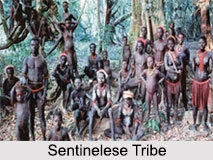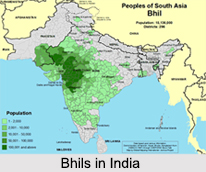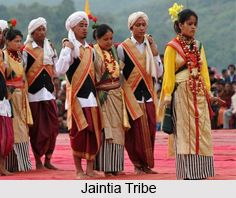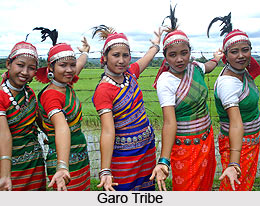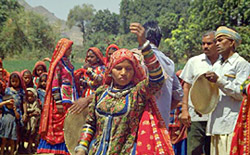The Jats who live in Kutch are particularly conscious of their identity as a group and their sense of unity comes from a perception of shared historical traditions and a belief in common ancestry.
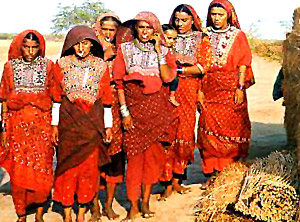 Originally the Jats were herders who lived in an area called Half in Iran. Five hundred years ago these shepherds migrated from Half and came to Sindh and Kutch to search for new grazing lands. They crossed the Rann of Kutch and settled there taking up farming, they became known as Dhaneth Jats. Some of the Koran and are known as the Fakirani Jats. All the Jats in Kutch are Muslims and have similar marriage and dowry customs.
Originally the Jats were herders who lived in an area called Half in Iran. Five hundred years ago these shepherds migrated from Half and came to Sindh and Kutch to search for new grazing lands. They crossed the Rann of Kutch and settled there taking up farming, they became known as Dhaneth Jats. Some of the Koran and are known as the Fakirani Jats. All the Jats in Kutch are Muslims and have similar marriage and dowry customs.
The Dhanetahs are the largest of the Jat Communities. They live throughtout north western Kutch. The Dhanetahs live in the Banni, herd cattle. They live in tents. The men care for the animals and women remain in camp looking after their families. They sell ghee. In Nakhatrana and Lakhpat Taluka the Dhanetahs who go for pilgrimage to Mecca and Madina are known as Hajis and they prefer to marry their children to the offspring of other Hajis.
The Fakiranis who comprise the smallest of the three Jats communities are nomads, who inhabit the swampy coastal regions of Lakhapat and Abdasa Talukas. They were originally holy men and beggars. The men herd camels and sell young male animals snd the women like the Dhanetahs stay in camp. They revere various heroes and goddesses and particularly a holy man called Savalo Pir. Fakiranis are poor bur they give as dowry as many gifts to their daughter as they can.
The Gharacia Jats are farmers who make their home in Lakhpat Talikas. The women do most of the work in the fields and the men care for their small herds of cattle, buffalo, sheep or goats. They revere the Goddess Jeejamah. The women wear Black cloth. GAGA Men wear Khamish and lungi. The most important article in a Jat women`s dowry is the Chanri.

















